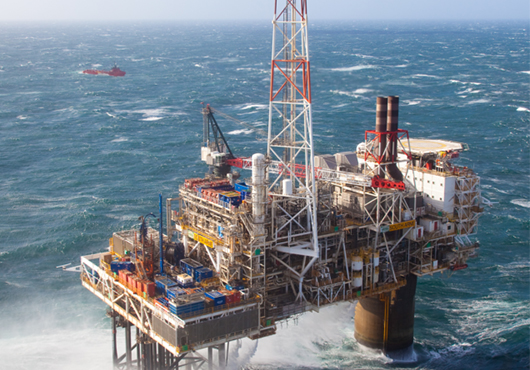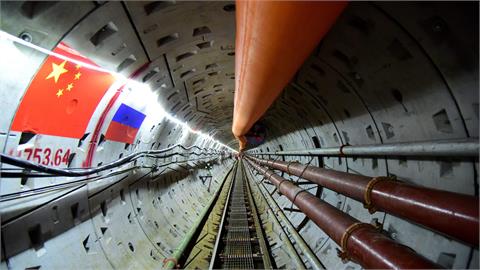by Vice Admiral (Ret) Fumio Ota, Ph.D. - Japan On July 22, the Japanese Government disclosed pictures of 16 Chinese maritime platforms constructed after the agreement of Joint Development of Oil Fields in the East China Sea between Japan and China in 2008. Even though all maritime platforms are on the Chinese side of the Middle Line, which Tokyo insists is the borderline between the Japanese and Chinese Exclusive Economic Zones (EEZ), there is a concern in terms of military implications
As the international energy market now faces an oversupply, China has imported massive amounts of natural gas from Turkmenistan, Kazakhstan and other countries since 2010. Therefore, China should have no high priority to construct more than a dozen oilrigs in the East China Sea at this time in order to secure an energy supply.
Could be used for military purposes
In November 2013, Beijing declared her Air Defense Identification Zone (ADIZ), which includes the Senkaku Islands and extends well over the Middle Line between Japan and China. Chinese continental radar sites, however, are not able to make surveillance over her ADIZ. In order to cover her ADIZ, the PLA has to utilize Airborne Warning And Control System (AWACS) assets such as the KJ-2000 and KJ-200. However, AWACSs cannot be always on station. Radar sites on those maritime platforms in the East China Sea make it possible for the PLA to survey her ADIZ, except for its southern part.
Sensors installed include not only Radar, but also Electronic Support Measures (ESM) including SIGINT sites, surveillance/reconnaissance devices such as Unmanned Aerial Vehicles (UAV), and under water sensors, even though the water depth in the East China Sea is rather shallow. Sensors are categorized as active ones and passive ones. Active sensors include radars and active sonars. However, passive sensors such as SIGINT stations, ESM devises and passive sonars are more troublesome because those can generally detect farther than active sensors can and we do not realize whether or not we are detected. While passive sensors can detect only direction but not distance, multiple passive sensors can be integrated so as to obtain a target fix. Therefore, continental and maritime platform passive sensors could be integrated in order to fix targets even in the southern part of the ADIZ.
Maritime platforms will potentially be used as stations for weapon such as Surface-to-Surface Missiles (SSM) and Surface-to-Air Missiles (SAM), which would be serious threats not only to Japan, including patrol aircraft like the P-3C, but also to the U.S. naval assets and military bases in Okinawa.
Both sensors and weapons will make the PLA effective in using ‘defensive emergency measures by force if an aircraft in the Chinese ADIZ does not obey PLA directives’, which were defined in the Chinese ADIZ announcement of November 2013.
Should a dispute occur between the U.S. and China, U.S. nuclear submarines stationed in Guam would take offensive action against PLA submarine bases such as Qingdao (SSs and SSNs) /Huludao (SSBN) and commercial ports such as Shanghai. In that case, an anti-submarine barrier in terms of both sensors and weapons would potentially be organized through those maritime platforms.
Not only reclaimed bases in the South China Sea, but also maritime platforms in the East China Sea would enable China to expand her sphere of influence. The First Island Chain, from the Japanese Archipelago through the Ryukyu Islands (i.e. Okinawa), Taiwan, the Philippines, and Borneo would define a Chinese inland sea. This would be a natural progression from the Territorial Water Law declared by Beijing in 1992, which defines Chinese sovereignty as including almost the entire East and South China Seas. The law was to pave the way for the PLA to exert sea control inside the First Island Chain by 2010, an objective listed in a PLA internal document and declared by Admiral Liu Huaqing, the Commander of the PLA Navy from 1982 to 1988.
Representing the other side of globe of East China Sea, Korean-Americans recently held an annual gala on Capitol Hill in Washington D. C. As I stated above, Chinese threats have become imminent, while overt North Korean threats remain. The important thing is to strengthen the cooperation between the U.S., Japan and the ROK. Since the Chinese ADIZ is partly overlapping with ROK’s ADIZ, it is possible to undermine the ROK’s national security if Chinese surveillance capability inside the Chinese ADIZ enhances. Plus, we have to keep it in mind for the North Korean to step up her nuclear capability, capped by a recent test launch of a ballistic missile from her submarine.
What the ROK president should do is to have a summit meeting with the Japanese Prime Minister without any pre-conditions, and reaffirm the bilateral cooperation with Japan under the context of Japan, the U.S. and ROK strategic collaboration. U.S. Congressmen should not support the ROK in attaching priority to issues from 70 years ago. Since Korean-Americans’ activities have been supported in the U.S., a school of thought in the ROK which insists "Current policy emphasizing past issues should not be changed, because U.S. legislators and other leaders are supporting us” has been strongly maintained. Those Korean people believe in their principles based upon their euphoria fermented through the U.S. political support. What happened because of that? The U.S. ambassador to the ROK, Mark Lippert, was attacked and serious injured by a Korean jingoist. While the U.S. representative was badly hurt, ROK government has not extended an official apology. As for an apology, the ROK only demands one from Japan, for issues 70 years past. While the ROK brings up the comfort women issue, official documents in the U.S. have surfaced indicating that ROK soldiers made Vietnamese girls comfort women and hurt as well as victimized them 50 years ago.
Recently, American investors suffered a loss. A stock exchange between two companies, which are both part of the Samsung group, has the purpose of aiding succession from the second to the third generation of the head Samsung family, Lee. Lawsuits were filed because the stock exchange inflicted disadvantages on an American investor, Elliott Associates. All trials in the ROK were concluded in favor of Lee’s family, emanating nationalistic sentiment which gives undue advantage to Lee’s family at the cost of the fact that ROK is a member of G20 and professes to be an advanced economic power. Do ROK’s actual conditions deserve to be a developed economy? American investors have been sacrificed. The American ambassador, Mr. Lippert, was also seriously stabbed. It may be time to reconsider how to deal with the ROK.




